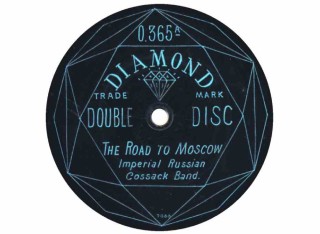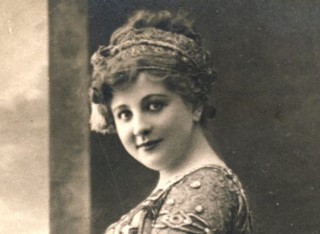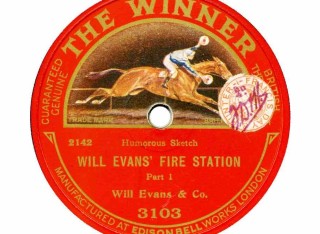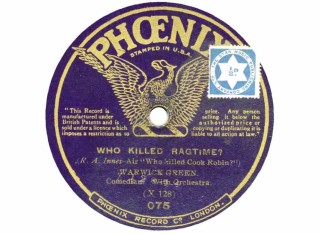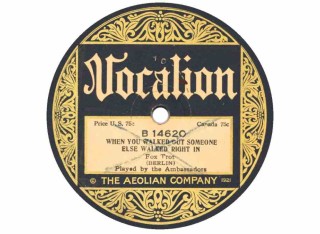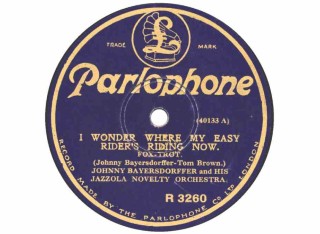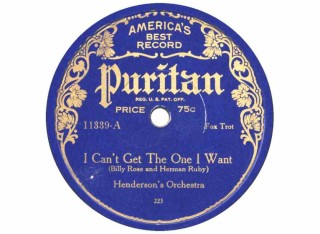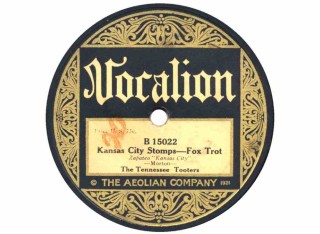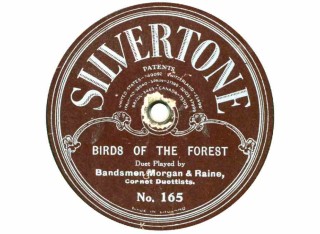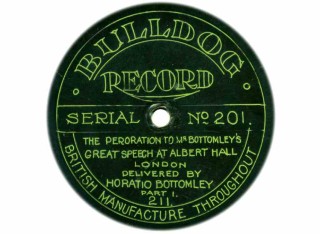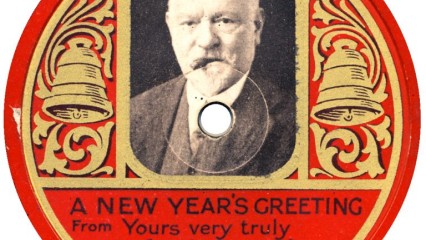
Listen to Early 78s
On this page you can listen to some early 78s with a wide range of content.
Currently under construction
What do Early78s sound like?
If you have not heard very old recordings before, listening to them can—at first—be rather difficult. But I assure you, you will be immensely rewarded by spending a few minutes acquiring the skill—for it is a skill—required. Helping you to acquire this skill is the purpose of this page!
You see, the trouble is that recordings made before about 1925–26 were produced by a purely mechanical system. Sound was gathered into a conical horn and intensified as it reached the narrow end, which was about 0.5″ (12 mm) across. The sound waves then entered a shallow chamber about 2″ (5 cm) in diameter. This had a very thin glass disc on the other side, which vibrated as the sound waves struck it. One end of a “see-saw” lever was attached to the centre of the glass disc, while the other end carried a sharp point that engraved (or embossed) these vibrations onto a rotating disc of wax. All this work was done by the energy in the sound waves alone.
The musical range was very small, so the sound was quite thin. Worse, the material from which the records were pressed was often coarse, which added unwanted background noise when the disc was played. Still, in 1900 it was regarded as marvellous that you could hear music, speech, or song “coming from nowhere,” even if there was some hissing or crackling behind it.
The great problem is, of course, that because these old records sound rather difficult to our modern ears, it has become commonplace for some people to dismiss them—to write most of them off. Such people say that there are so many deficiencies in early recordings—both technical and aesthetic—that they mostly don’t merit serious study.
But please let me ask you a question. If it turned out that your great-great-grandfather had made a record in 1920, surely you would want to hear it? Of course you would! So immediately, you have discovered an interest in “old recordings”—even if they are technically poor by today’s standards.
Below you will find a selection of old recordings, all made mechanically before 1926. I have made no attempt to choose “user-friendly” ones, but all of the discs are in good condition—it’s extremely difficult to make a silk purse out of a sow’s ear! Have a dabble and see if you like any of them. You don’t have to listen to them all the way through; you can click on another, and that will start to play instead. You may well enjoy some of them—I certainly hope so. Happy listening!
Band recordings
Bands may be of many different formats; but very frequently before 1920, the default studio band resembled most of all, a military band. We might say a ‘wind band’ today. They could provide enough volume to drive the early recording equipment in instrumental numbers, and often provided backing for vocal records and instrumental solos. We also have a category below for Military Bands of a specific regiment. However, the distinction may be blurred, because in those days, many London-based regimental bandsmen were allowed to accept freelance engagements, and would have recorded with civilian studio bands like those under this heading.
Classical Music - Instrumental
Classical Music - Vocal
Dance bands and jazz
No distinction is drawn between dance bands and jazz bands, for in this era there wasn’t any — they all played for dancing. No matter how jazzy the music, whether by King Oliver or Paul Whiteman, it was always intended for dancing.
Descriptive recordings
A forgotten genre. In the days before radio and sound film, studio re-enactments of important events were sometimes made as cylinder and disc records. Battles, political speeches, interviews with famous people.

